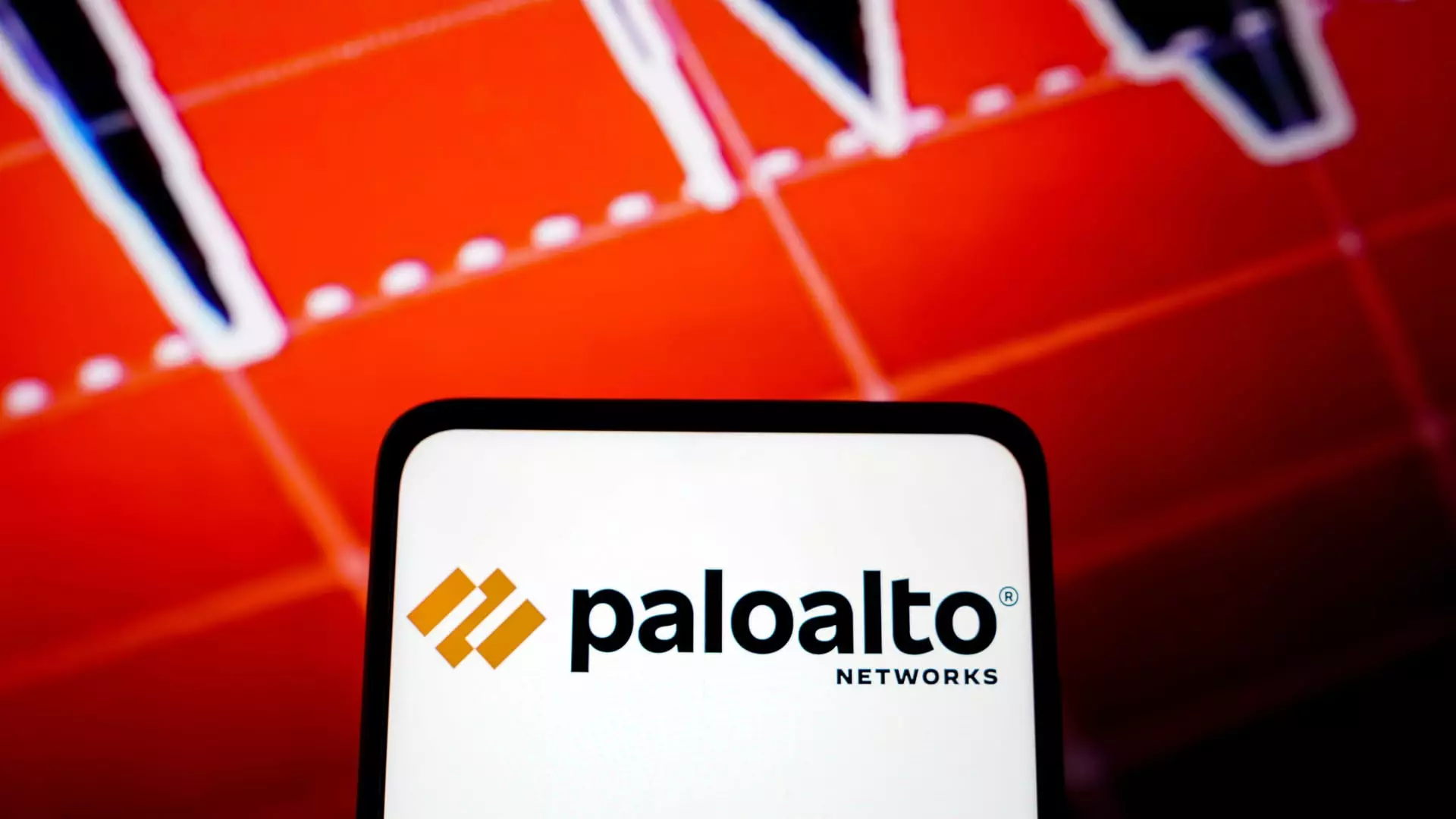In the ever-turbulent landscape of today’s stock market, a cautious investor cannot ignore the signals that periods of decline may present opportunities rather than mere setbacks. When stocks like Palo Alto Networks experience a significant drop—more than 15% over recent months—smart money should see this as a field ripe with possibilities rather than a sign to abandon ship. Market hesitation often masks underlying potential. Discouraged investors tend to panic, and in doing so, they overlook the resilient fundamentals of innovative companies that continue pushing forward amid adversity.
While the media often paints declines as warning signs, they are, in many cases, a chance to acquire undervalued assets with long-term growth prospects. Specifically, cybersecurity firms, which are critical for the digital age, benefit from increasing reliance on cloud-based solutions and artificial intelligence advancements. These developments require robust security, and companies that master AI-driven cybersecurity are positioned to capitalize on this persistent trend. Smart investors understand that “cybersecurity moving forward” is not just poetic but a concrete necessity for the future digital economy. Hence, a dip in these stocks might just represent a golden buying opportunity for those willing to think beyond the short term.
Artificial Intelligence as a Catalyst for Growth
Embracing the potential of artificial intelligence within cybersecurity is an imperative for the savvy investor. As AI becomes smarter, threats evolve; consequently, cybersecurity must also enhance its capabilities. Companies that are leading this charge are likely to outperform in the long run. The argument isn’t solely about current earnings but about positioning oneself for future resilience. The value of a company like Palo Alto Networks becomes clear when viewed through this lens: its ability to innovate and adapt determines its staying power.
However, the challenge lies in discerning which companies truly leverage these technological innovations effectively. Overhyped firms may temporarily inflate their valuations without delivering sustainable growth. Yet, when a stock drops following unimpressive quarterly results, it often reflects market overreaction rather than substantive weaknesses. Investors, especially those with a long-term view, should scrutinize fundamentals, rather than succumb to knee-jerk reactions. In this light, a stock price correction halts being merely a loss and transforms into a chance to purchase a future leader at a discount.
Luxury and Niche Markets as Defensive Plays
Turning to niche sectors such as luxury cruises offers insight into how differentiated branding and exclusive experiences can insulate a company from wider economic turbulence. Viking Holdings exemplifies this principle. Its focus on delivering personalized, high-end travel experiences across multiple continents sets it apart from mass-market cruise operators. This positioning allows it to target affluent consumers who are less sensitive to economic downturns, thus providing a relatively stable revenue stream.
While the market’s enthusiasm for Viking is evident—up over 37% year-to-date—more thoughtful investors might also consider the valuation and growth prospects. With predicted earnings growth of around 32%, Viking exemplifies why niche luxury plays have resilience because they target high-margin segments. Although not currently owned by the analyst, the optimism about future ownership underscores how brands cultivating loyalty among the wealthy can outperform broader averages, especially in uncertain economic climates where disposable income remains relatively intact for the affluent.
In terms of portfolio strategy, such companies serve as semi-hedges—less volatile than generalized tourism stocks but offering substantial growth aligned with the luxury trend. The key takeaway is understanding where consumer wealth is flowing and aligning investments accordingly. Niche markets, particularly those with established exclusivity, are better poised to weather economic storms than broad-based, commoditized industries.
The Pitfalls of Growth-Deliberate Consumers
However, not all sectors presenting rapid growth are equally reliable. Estée Lauder highlights this precariousness. Despite a significant recent surge—over 39% in three months—caution is warranted. The company’s stagnating revenue and earnings over recent years signal fragility and stiff competition. When a firm’s growth slows or stalls, especially in a fragmented market like cosmetics, the risk of overvaluation increases.
It raises an important question: Can a glamour brand with persistent competition sustain its growth? Currently, the market seems optimistic, but underlying issues remain. This illustrates a broader truth: Growth alone is insufficient; quality, innovation, and market positioning define true resilience. Investing in companies that have merely experienced transient surges without fundamental improvement is fraught with risks, especially when earnings are forecasted to decline significantly—up to 85% year-over-year in some cases.
For the discerning investor adopting a center-right liberal stance, emphasizing fiscal discipline, sustainable business practices, and value-oriented investing becomes paramount. Betting on overhyped stocks with questionable long-term fundamentals is akin to chasing fleeting glamour rather than investing in companies with real staying power. The danger lies in succumbing to market hysteria, which often masks the debt of overleveraged or poorly differentiated firms.
In the end, the interplay of market volatility, technological innovation, niche branding, and fundamental strength underscores the importance of critical thinking in investment decisions. Opportunistic investors must sharpen their judgment—recognizing that temporary setbacks can serve as gateways for acquisition, but only if approached with rigorous analysis and skepticism.

